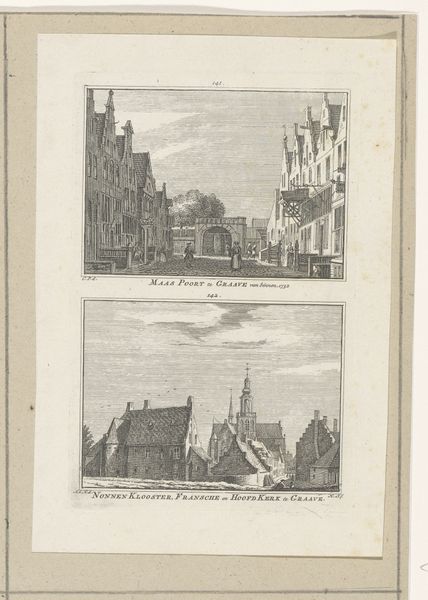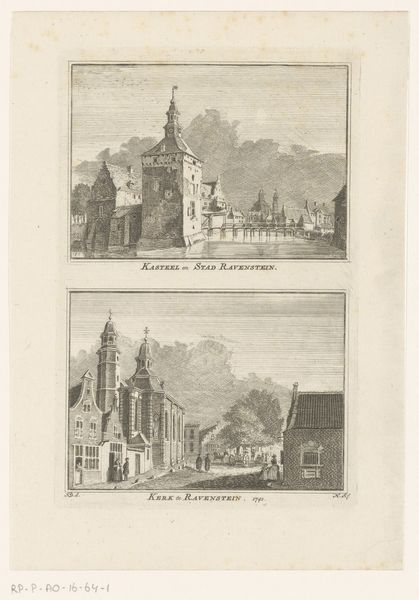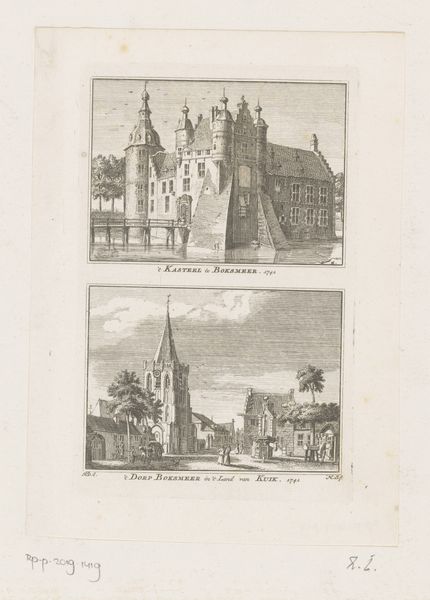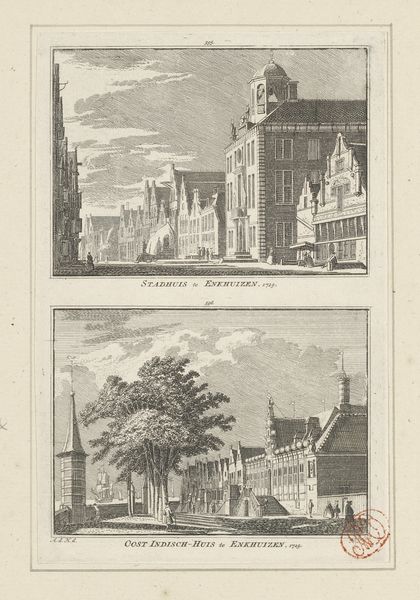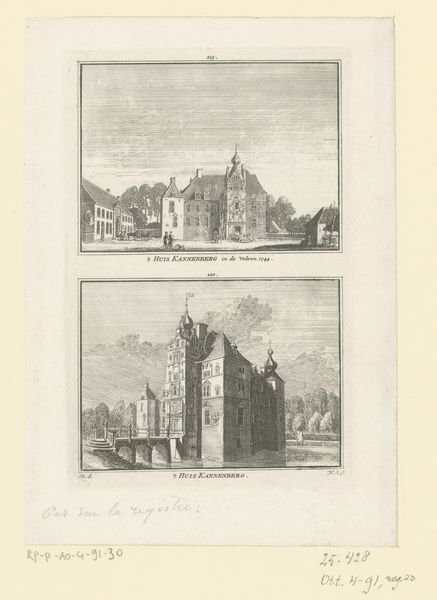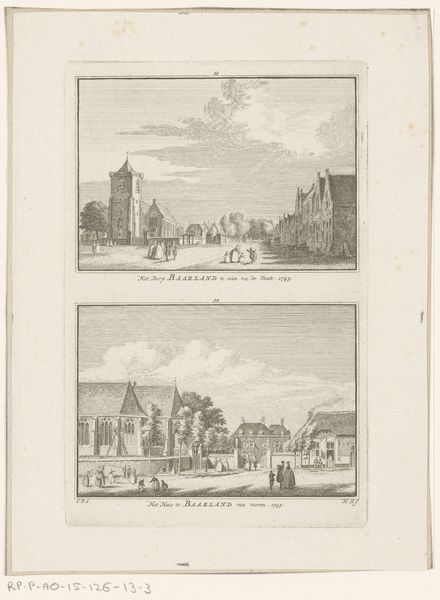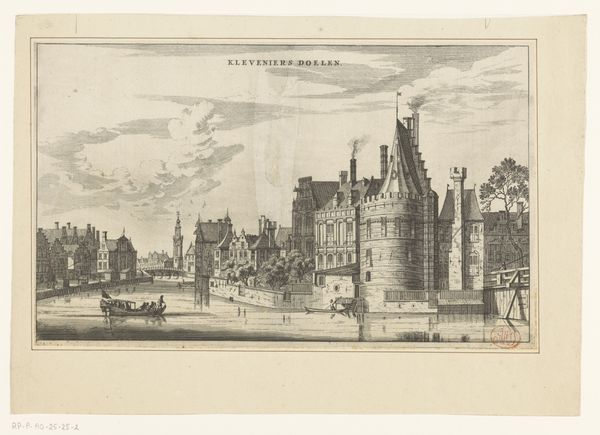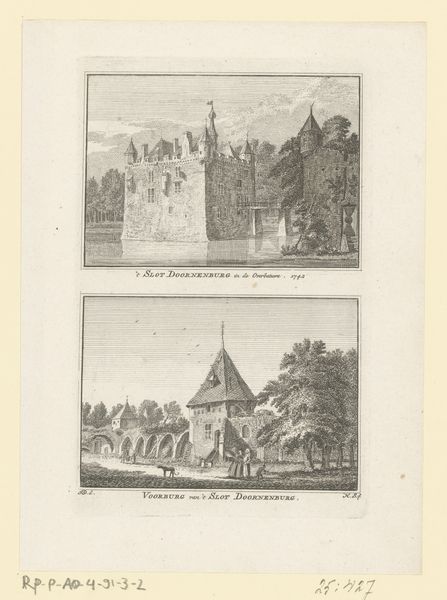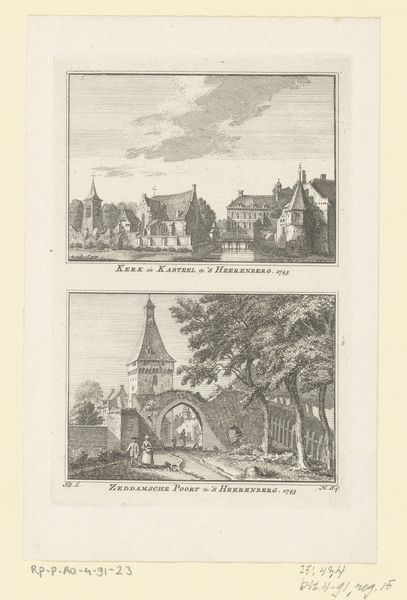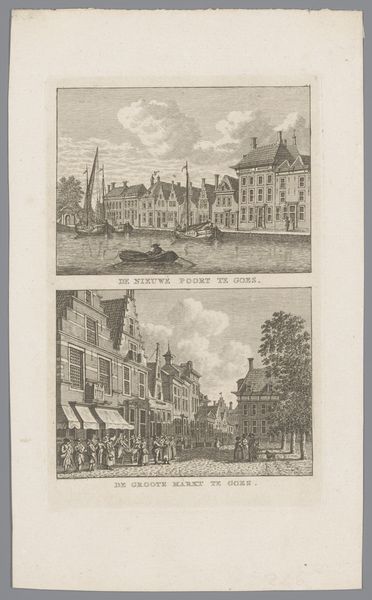
Twee gezichten op Kasteel Keppel, van de voorkant en de achterkant gezien 1745 - 1792
0:00
0:00
hendrikspilman
Rijksmuseum
print, engraving, architecture
#
dutch-golden-age
# print
#
landscape
#
engraving
#
architecture
Dimensions: height 166 mm, width 107 mm
Copyright: Rijks Museum: Open Domain
Curator: Before us, we have an engraving entitled "Twee gezichten op Kasteel Keppel, van de voorkant en de achterkant gezien"—"Two Views of Keppel Castle, Seen from the Front and Back". The artist is Hendrik Spilman, and it's estimated to have been created between 1745 and 1792. Editor: It has a decidedly serene quality, doesn't it? The delicate lines and monochromatic palette give it a certain restrained elegance. The castle reflected in the water is very still, calm even. Curator: Yes, it's a testament to Dutch Golden Age aesthetics, albeit towards its later period where the grandeur became a bit more subdued. The work depicts Kasteel Keppel, a castle of course, but also a manor in the broader societal scheme of the 18th century, acting as a symbolic node of power and patronage. Editor: I see the imposing architecture but what also strikes me is how the water around it acts almost as a mirror reflecting the essence of stability and tradition. Water as reflection is often tied to ideas of memory. Do you feel there's a deliberate mirroring of an older order reflected? Curator: Certainly, but remember the context. This was an era where established power structures were being subtly questioned. While seemingly celebrating aristocratic power, it could also inadvertently capture its fragility—an isolated structure defended by water in a time of potential upheaval. Who did the land actually belong to? Editor: Ah, I see, a visual document ripe with sociopolitical context beyond surface admiration. What about the symbolism of the castle itself? Those towers and walls must communicate ideas about the family lineage associated with the space. Curator: Absolutely. The visual language speaks volumes, echoing anxieties and desires inherent in the social fabric. Lineage, legacy, land disputes. What seems like just landscape artwork conceals all that, wouldn't you agree? Editor: Without a doubt, there’s definitely more than what initially meets the eye! This reminds us that even seemingly straightforward architectural depictions often reflect complex socio-historical dialogues. Curator: It shows how an understanding of social contexts is necessary to really glean the richness behind simple-seeming representational landscapes.
Comments
No comments
Be the first to comment and join the conversation on the ultimate creative platform.
